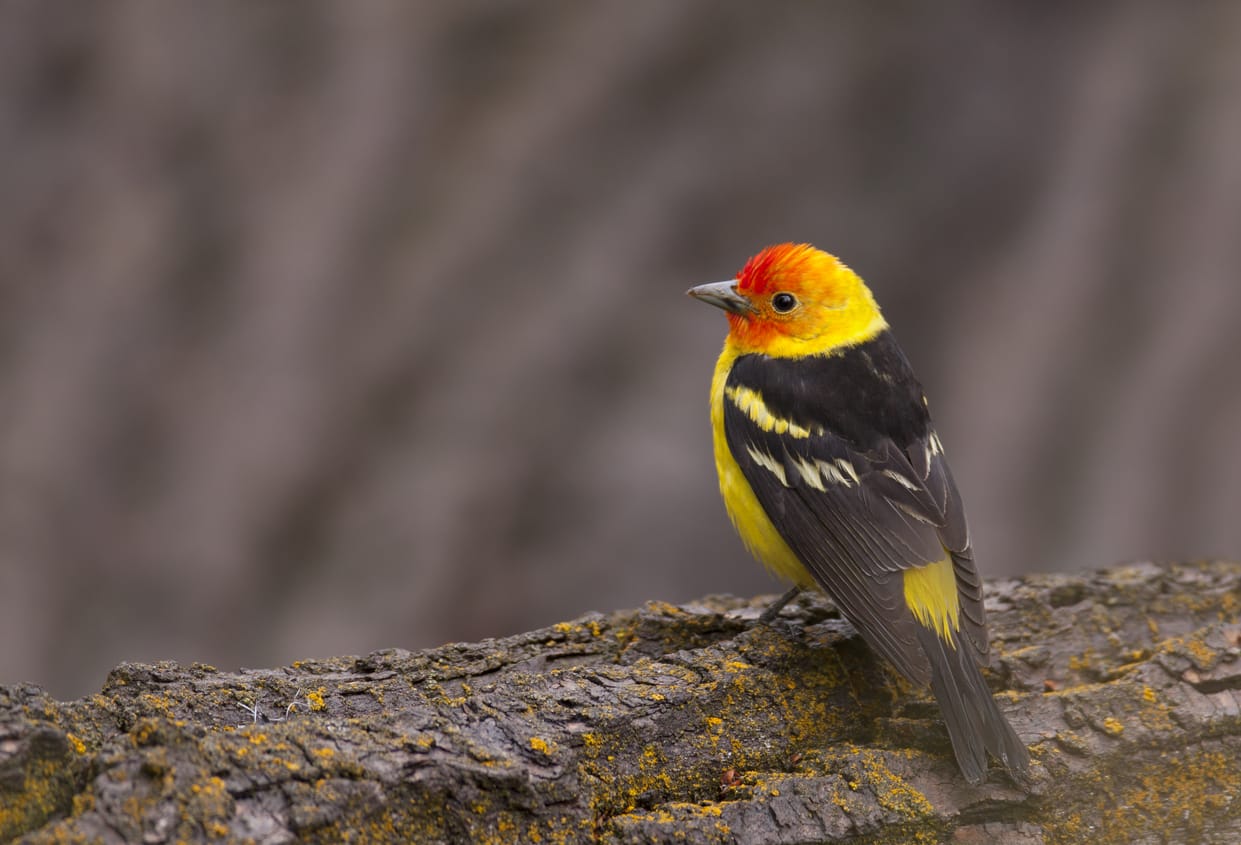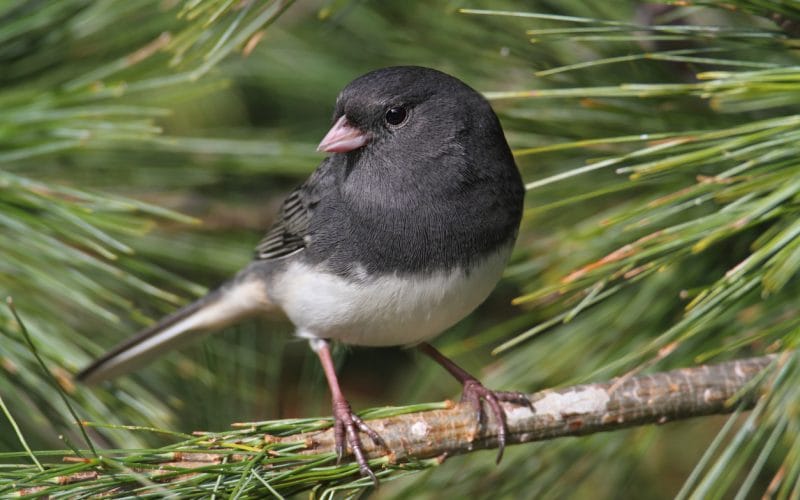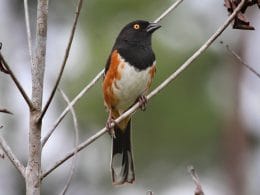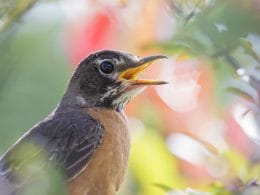Oregon or the Beaver State is an interesting spot for nature and history lovers. There are still parts that you can visit today in Oregon, and they’ll make you feel like you’re in a Western movie, so you can go hiking around the area or check out the landmarks.
It’s also home to the largest living organism on the planet, a giant mushroom that grows right in the Malheur National Forest in Eastern Oregon.
But as a birdwatcher, you’d be happy to know that there are about 544 bird species that occur in Oregon. A few aren’t permanent residents, but some of them can actually come and visit you at home.
Keep on reading to learn more about Oregon backyard birds.
18 Bird Species that You Can Find in Oregon
Things can be confusing for a beginner bird watcher, but you can start your journey from the backyard. You can watch the birds, write your notes, and learn more about them before you head on your next bird-watching trip.
Here’s a list of 18 bird species that are common Oregon backyard birds.
1. Western Meadowlark
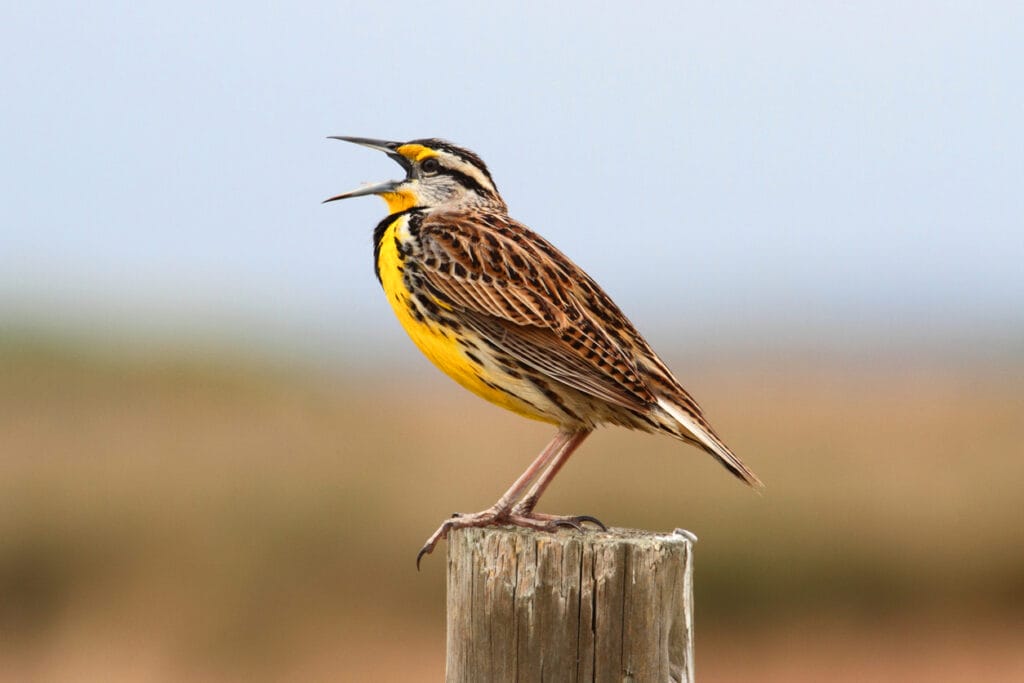
The Western Meadowlark is mostly found in the eastern parts of Oregon and was voted the State Bird in 1927. It’s considered a sensitive species because humans have destroyed or altered much of its habitat.
Author Note: It’s a small bird with brown patterned upper and yellow underpants, and it’s often more easily heard than seen.
The Western Meadowlark can visit your backyard if you set up a feeder in a large open habitat. It also visits ranches to look for beetles, ants, crickets, and grasshoppers under manure piles.
2. Song Sparrow

Another common Oregon backyard bird is the Song Sparrow. This russet and gray small sparrow is a regular backyard guest if you offer regular food. It’s easily seen, especially during spring and summer, when the male birds perch on exposed branches and sing their song.
It usually flies at a low level and will feed on the seeds, fruits, and small invertebrates in your backyard during summer.
The male and female usually look for nesting sites together. Since the Song Sparrow isn’t afraid of humans, the birds won’t mind building their nests near flower beds in your garden.
3. Dark-eyed Junco

The Dark-eyed Junco is a medium-sized sparrow with dark gray plumage, a pink bill, and some white feathers on the tail.
It’s a ground bird that can be seen hopping around, so don’t get surprised if you see it on your lawn looking for fallen seeds. It prefers to eat sorrel, buckwheat, and chickwheat but will eat wasps, ants, flies, butterflies, moths, caterpillars, and beetles during the breeding season.
You can attract the Dark-eyed Junco to your backyard if you fill your backyard feeder with millet, which the bird prefers over sunflower seeds.
4. American Robin

The American Robin is commonly found in lawns and backyards, pulling earthworms out of the ground. It also feeds on snails, bugs, and even some aquatic insects.
If you grow juniper berries in your backyard, American Robins will visit you often. The birds will try to look for fruits with bugs in them, and will visit bird feeders in winter when food is scarce.
You can also set up a nesting box in your backyard to attract a mating pair.
5. Anna’s Hummingbird

This common hummingbird is always a delight to find, thanks to its iridescent bronze- emerald and crimson plumage. Its acrobatic flying style makes it easy to notice.
You can see Anna’s Hummingbird feeding on the nectar of big tubular flowers and berries in spring, and it will visit your backyard all year long if you have a hummingbird feeder. You don’t need to use honey or food coloring, as only water and sugar are needed to make delicious nectar for this colorful bird.
Anna’s Hummingbird likes to lick the sap from the holes left by sapsuckers and will catch the insects trapped in it. The bird also feeds on small insects like leafhoppers and whiteflies.
6. American Crow

The American Crow is easily identified, thanks to its overall black body. Although in folk tales the American Crow is usually associated with death and trickery, this bird is actually one of the smartest ones in the world. Some scientists claim that it’s as intelligent as a chimpanzee since it can use tools.
This bird doesn’t usually visit backyard feeders, but it feeds on anything. It will eat earthworms from your lawn, catch insects and small animals, and even try to forage the garbage for leftover food.
Leaving peanuts in an open space is a big attraction to American Crows. If you’re raising chickens in the backyard, you need to keep them safe because American Crows can rob baby chicks.
7. California Scrub-Jay
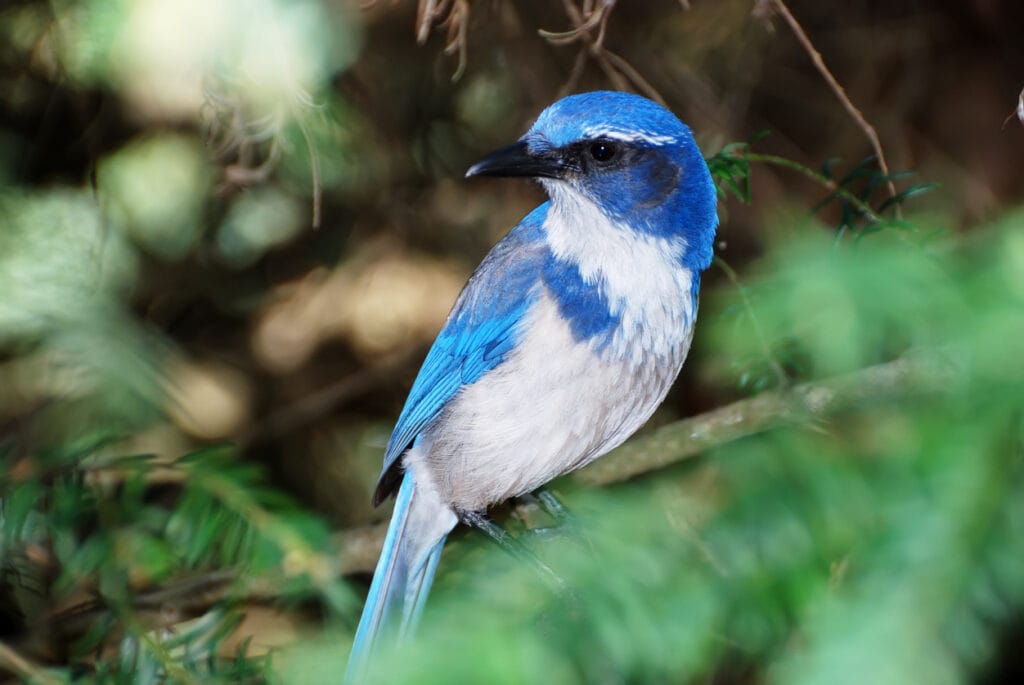
The California Scrub-Jay is a common backyard guest all along the west coast, including Oregon. This large songbird is gray and blue with white underpants and a bold blue necklace.
Top Tip: It’s fond of acorns, but it will visit your backyard feeder if you offer sunflower seeds and peanuts. If you grow small shrubs or short trees, you might be able to attract a mating pair.
You might be able to see some California Scrub-Jays standing on deer backs if your house happens to be within the range of mule deer. The birds feed on the ticks and parasites, and the deer usually appreciate it.
8. Northern Flicker

Although it doesn’t visit bird feeders much, the Northern Flicker will enjoy spending time in your backyard if you have a birdbath.
The body of this large woodpecker is brownish-gray with some black spots, and the underside of the tail and wings is red, as Oregon is home to the Red-Shafted Northern Flicker.
It usually feeds on the ground and uses its barbed-tip tongue to dig into ant colonies and feed on them. It feeds on flies, moths and finds the insects hiding in cow patties.
In residential areas, the Northern Flicker can be a nuisance as it drums on wooden and metal road signs for communication.
9. American Goldfinch

The American Goldfinch is easily found in different parts of Oregon, and you can easily spot it thanks to the bright yellow and black plumage.
Known for its acrobatic flying style, the American Goldfinch is always fun to watch in your backyard and surrounding areas. It gets attracted to all types of bird feeders, including platform, hopper, and hanging bird feeders if you fill them with sunflower seeds and nyjer.
You need to rake the ground well to protect the American Goldfinch from contagious diseases.
10. Black-capped Chickadee
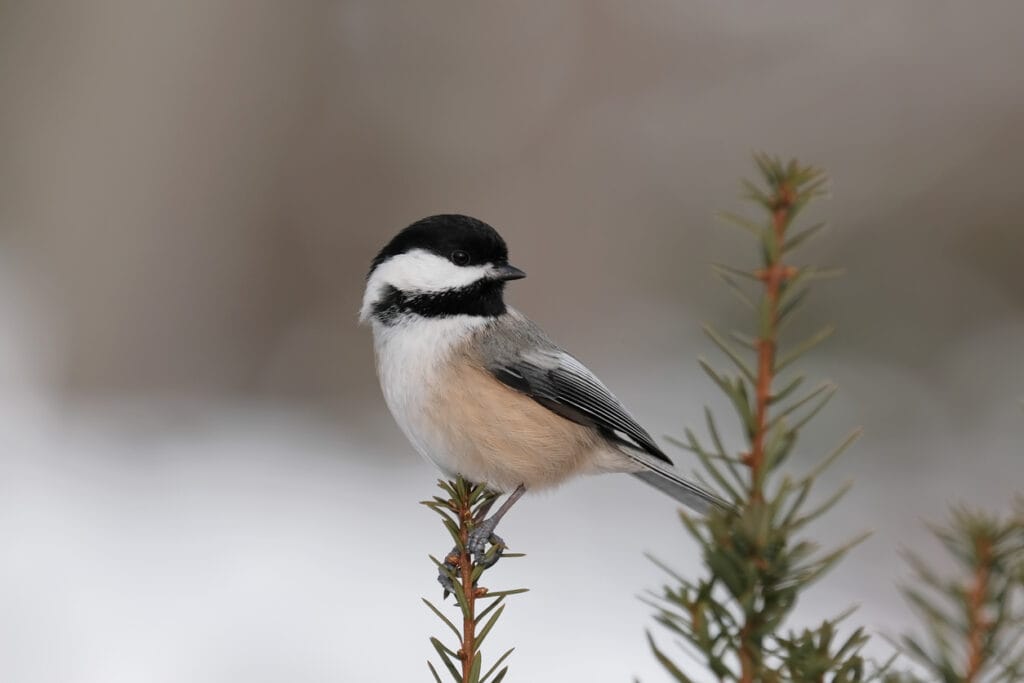
The Black-capped Chickadee has a soft gray back with white cheeks and a black cap and bib. It doesn’t mind visiting backyard feeders, including the small hanging ones.
In most cases, the Black-capped Chickadee will grab a seed or two and then fly in an acrobatic style before grabbing another one. It prefers sunflower seeds, peanuts, and suet.
If your backyard has a willow or birch tree, a mating pair might consider it for building a nest. It also accepts nest boxes.
11. Steller’s Jay
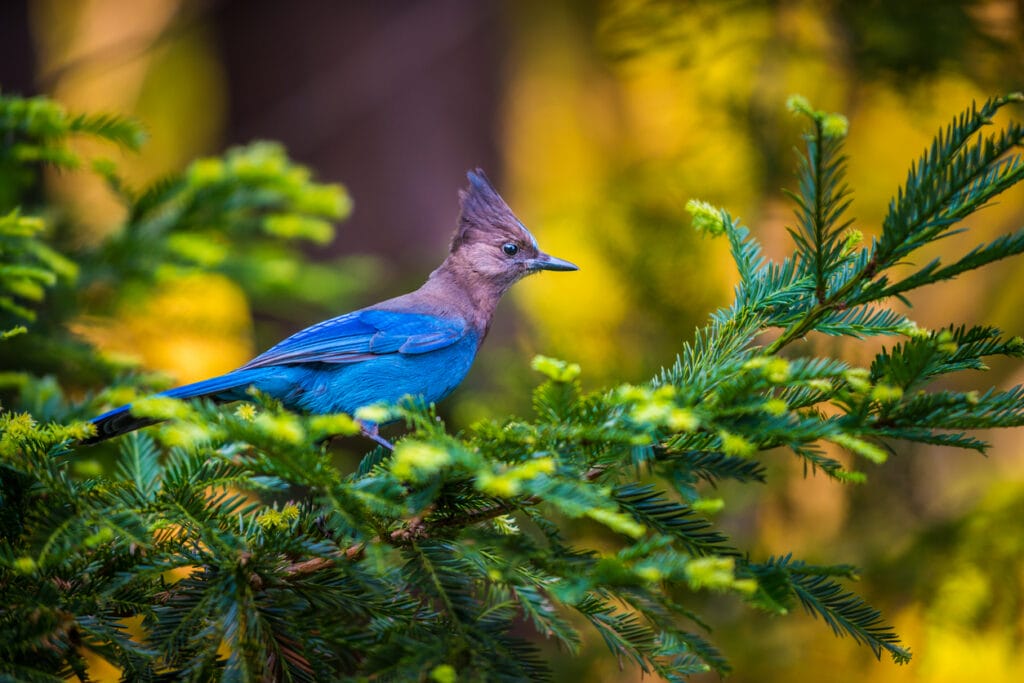
It’s easy to spot a Steller’s Jay, thanks to its charcoal black head and bright blue plumage that looks almost sparkling at the wings.
This bird is a forager and will eat almost anything it can find, including insects, seeds, nuts, berries, and even eggs and nestlings. It sometimes steals food from other birds and won’t mind eating some picnic leftovers.
Top Tip: Filling your bird feeder with large seeds, peanuts, and suet will definitely attract the Steller’s Jay to your backyard. In most cases, it takes too many seeds to hide them elsewhere and store them for winter.
12. Spotted Towhee

The Spotted Towhee has jet-black underpants with rufous flanks that match the dry leaves it hops around. It has a white belly and spotted wings and back. Female birds are grayish-brown in areas where the males are black.
If you’ve got bushy, overgrown borders, the Spotted Towhee might not just visit your backyard but might even live in it permanently. It usually likes to feed on the seeds that fall from feeders, so you can attract this bird by spilling some seeds on the ground.
It also feeds on berries and acorns, and during the breeding season, it will feed on beetles, crickets, moths, wasps, bees, grasshoppers, and ladybugs.
13. Cedar Waxwing
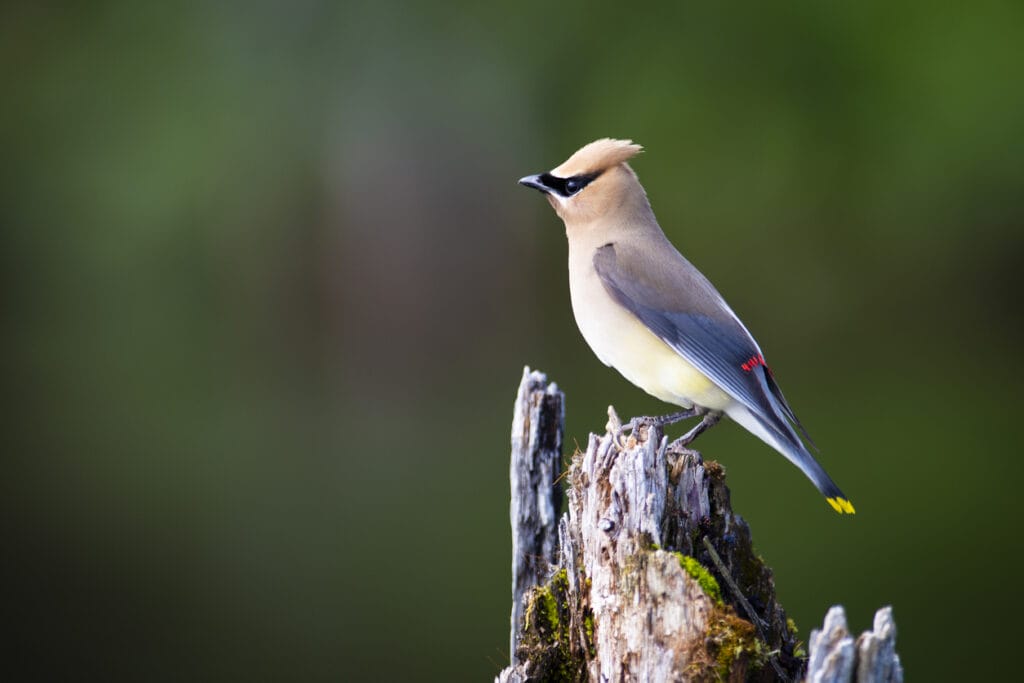
The Cedar Waxwing is pale brown with fading soft gray plumage on the wings. The belly is pale yellow, and the tail is pale gray with a bright yellow tip.
Author Note: This bird gets its name from the red secretions found on the inner flight feathers. Nobody knows what’s their function. However, some scientists believe that they help it attract mates.
Feeding on fruits all year long, these birds gather in flocks of hundreds feeding on berries. This is why the Cedar Waxwing will visit your backyard if you plant trees and shrubs that bear small fruits like cedar, juniper, dogwood, and winterberry.
14. Downy Woodpecker
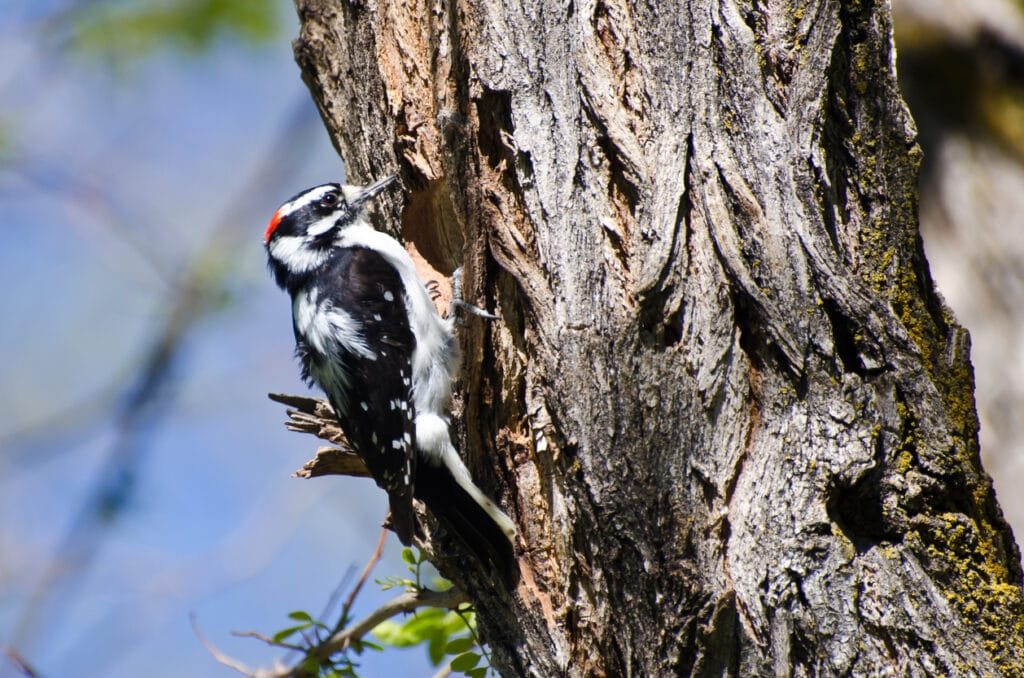
The Downy Woodpecker has a white belly, back, and throat, while the rest of the body is black with white spots on the wings. Telling the male birds from the females is easy, thanks to the red patch that grows at the back of the head.
It’s a regular visitor at backyards, especially in springtime, where it will knock on any wooden and metal objects it can find. The Downy Woodpecker uses drumming as means of communication or marking its territory.
It’s fond of suet feeders, but you can still attract it if you fill your feeder with black oil sunflower seeds, millet, peanuts, and chunky peanut butter. It also occasionally enjoys the nectar from hummingbird feeders.
15. European Starling

Although the European Starling isn’t a native bird in Oregon, it’s one of the most common ones, to the point of being considered a pest by some residents because it represents a threat to native birds and crops.
This bird has shiny purplish-green plumage with a yellow beak and grows white spots in winter. It doesn’t mind being around people and can be seen in backyards often.
The European Starling will eat anything, including invertebrates, grasshoppers, beetles, flies, and spiders. It also eats seeds, nuts, and fruits and will accept anything you offer at the bird feeder.
16. White-crowned Sparrow

The White-crowned Sparrow is plain gray with white-black stripes on the head and can be seen hopping on the ground or perching on waist-level branches.
It visits backyard feeders for sunflower and other types of seeds and is most likely to hop on the ground to look for the seeds that other birds dropped. Leaving a brush pile in your backyard will encourage the White-crowned Sparrow to spend more time in your backyard.
It also eats elderberries, blackberries, barley, oats, wheat, and some insects like beetles and wasps.
17. Swainson’s Thrush

The Swainson’s Thrush is a medium-sized buffy brown bird with a spotted chest and pale underpants. It might not be easy to see this shy little bird, but it can be heard singing its distinctive song, especially in the summer.
This bird feeds on arthropods and insects during the breeding season and will feed on fruits in fall and winter. It might not be interested in bird feeders, but the Swainson’s Thrush will visit your backyard if you provide ground-level birdbaths.
Author Note: You should also provide a shrub cover, avoid pesticides, and leave litter leaves undisturbed to attract this bird.
18. Western Tanager

This bright yellow bird has black wings and a flaming orange head. The Western Tanager is usually seen foraging along branches and leaves.
It will visit your backyard if you live in a wooded area, although it doesn’t feed on seeds. However, it will accept freshly cut oranges and other fruits if you offer them at the bird feeder.
Your backyard will also look much more interesting if there’s a pond or a birdbath. During winter, it mainly feeds on fruits like cherries and different types of berries, but it will feed on some insects like grasshoppers, termites, and wasps during the breeding season.
Wrap Up
The State of Oregon is home to different bird species, thanks to its wide flora and fauna diversity, as almost 60% of the state is covered in forests.
At the same time, it overlooks the Pacific Ocean, so you can see a lot of sea birds if you head to the coastline.
But even in the comfort of your home, the bird species we mentioned in this article might come and pay you a visit.
So, keep an eye on your backyard feeder and make sure that you provide a fresh supply of food to attract these wonderful Oregon backyard birds.
FAQ
The Downy Woodpecker is found in most suitable habitats across the United States including Oregon. It is also attracted to bird feeders so fill up those nuts!
The American Robin is one of the most reported species across the state and can be seen predominately in the central and western areas.
The Western Snowy Plover only breed here and can be seen along the coastline of Oregon.




